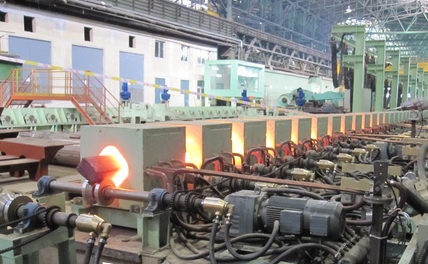- 23
- Dec
What is the purpose of surface heat treatment
What is the purpose of surface heat treatment
①Improve the wear resistance of parts. High-carbon martensitic hardened surface layer can be obtained by carburizing and quenching of steel parts; dispersion hardened surface layer of alloy nitride can be obtained by nitriding method for alloy steel parts. The surface hardness of steel parts obtained by these two methods can reach HRC58~62 and HV800~1200 respectively. Another way is to form a wear-reducing and anti-adhesive film on the surface of the steel to improve the friction conditions, which can also improve the wear resistance. For example, the steam treatment surface produces a ferroferric oxide film which has the effect of anti-adhesion; the surface vulcanization obtains a ferrous sulfide film, which can have both anti-wear and anti-adhesion effects. The multi-element co-infiltration process developed in recent years, such as oxygen-nitriding, sulfur-nitrogen co-infiltration, carbon-nitrogen-sulfur-oxy-boron five-element co-infiltration, etc., can simultaneously form a high-hardness diffusion layer and anti-sticking or anti-friction film, effectively improving The wear resistance of the parts, especially the adhesion resistance.
থেকে
②Improve the fatigue strength of parts. Carburizing, nitriding, soft nitriding and carbonitriding methods can all make the surface of steel parts strengthen while forming residual compressive stress on the surface of the parts, effectively improving the fatigue strength of the parts.
থেকে
③Improve the corrosion resistance and high temperature oxidation resistance of parts. For example, nitriding can improve the atmospheric corrosion resistance of parts; after aluminizing, chromizing, and siliconizing steel parts, it will react with oxygen or corrosive media to form dense and stable Al2O3, Cr2O3 , SiO2 protective film, improve corrosion resistance and high temperature oxidation resistance.
থেকে
Generally, steel parts will become embrittlement when they are hardened. When the surface hardening method is used to increase the surface hardness, the core can still be maintained in a good toughness state, so it can better solve the contradiction between the hardening of steel parts and its toughness than the integral quench hardening method of parts. Chemical heat treatment changes the chemical composition and structure of the surface of steel parts at the same time, so it is more effective than surface hardening methods such as high and medium frequency electric induction and flame quenching. If the penetrating element is selected appropriately, a surface layer suitable for the various performance requirements of the part can be obtained.

